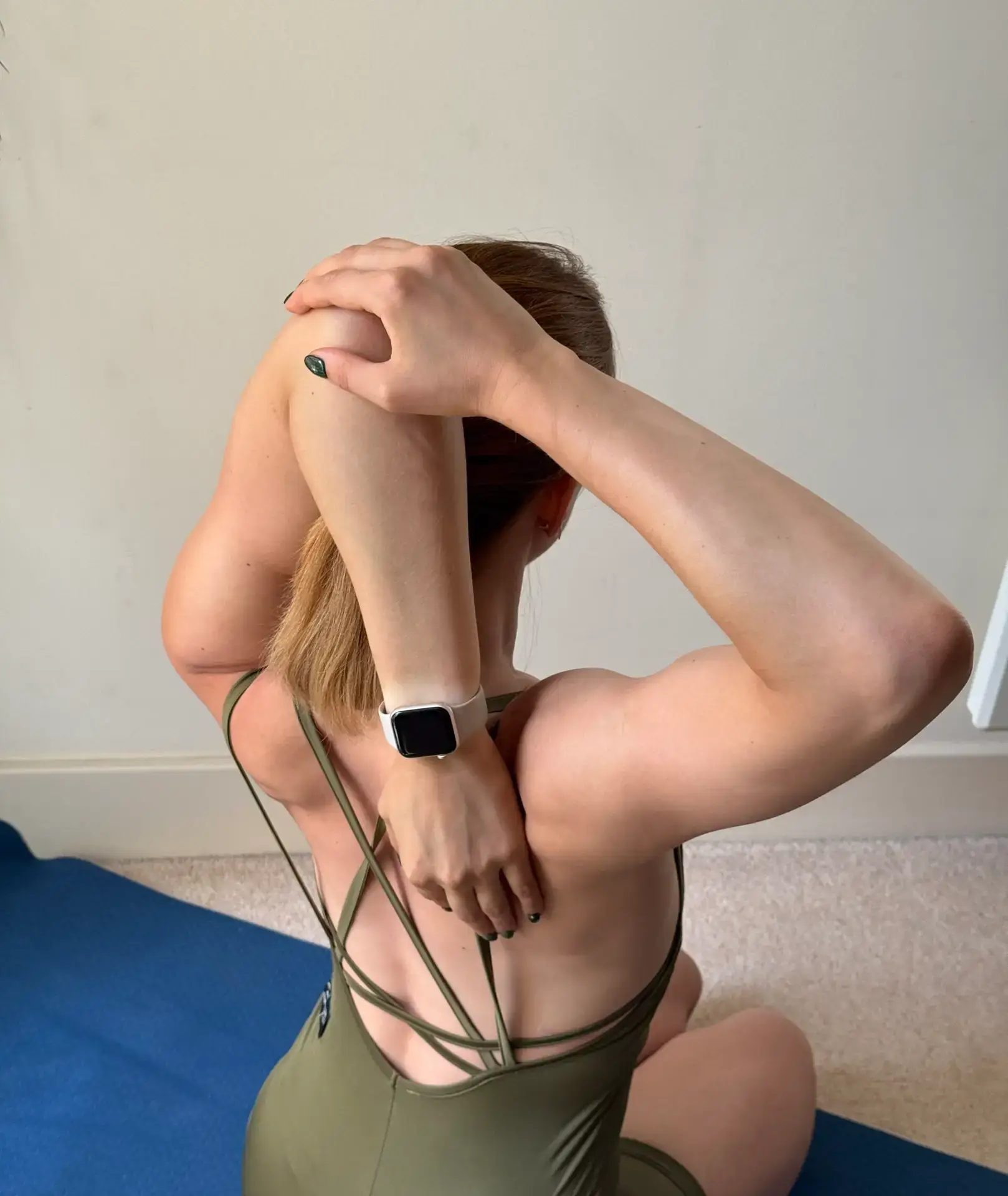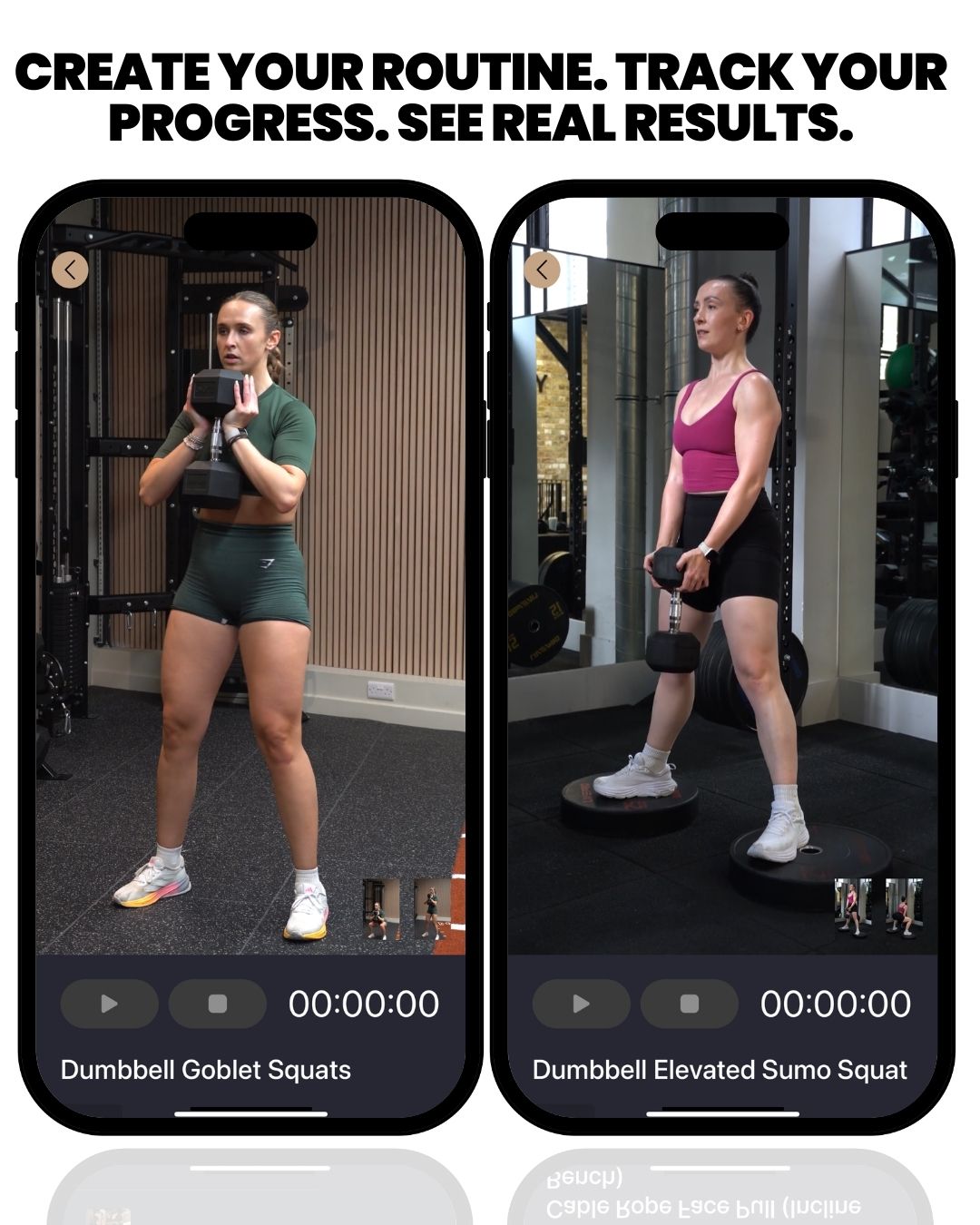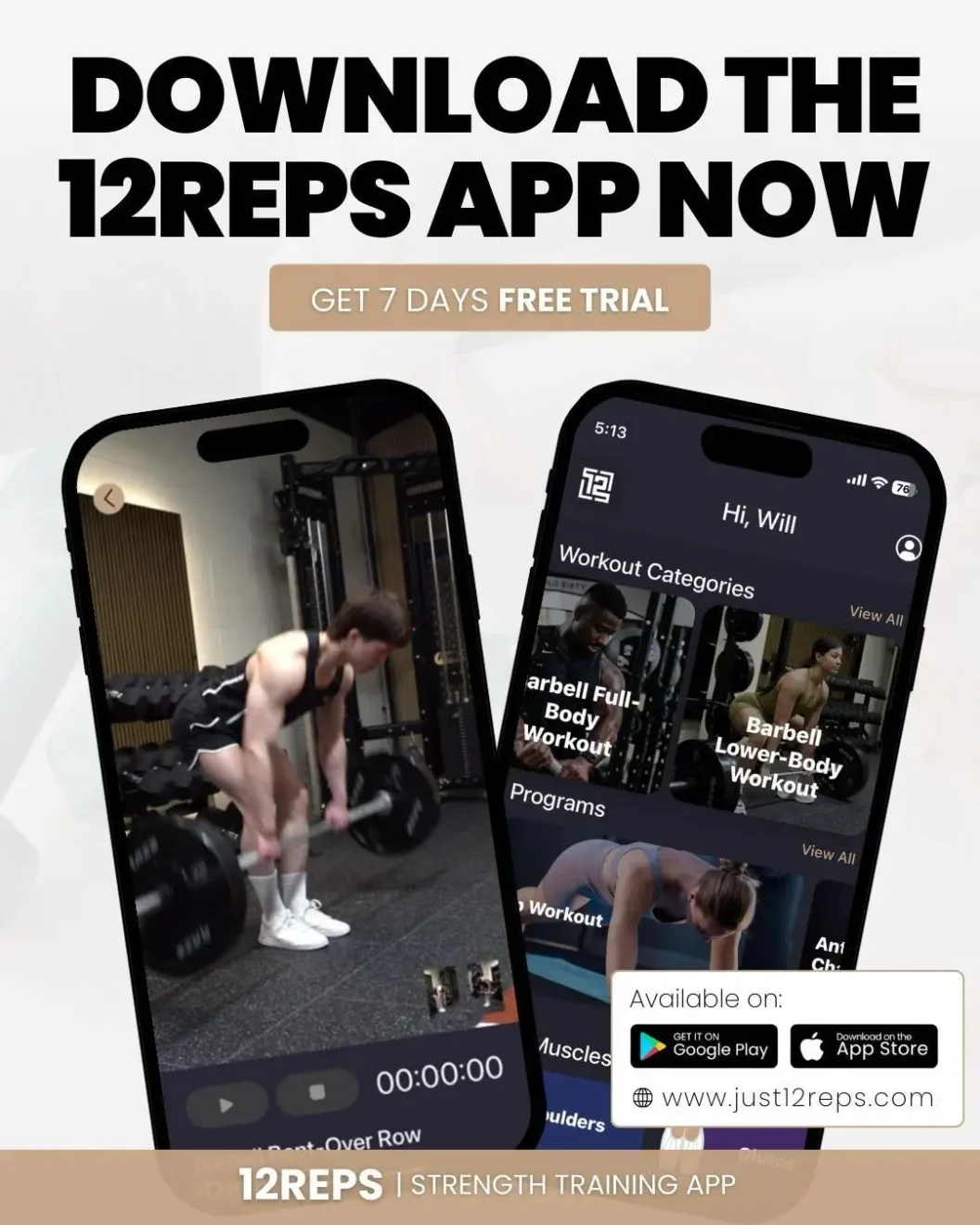Written by Will Duru, BSc (Hons) Sport and Exercise Science, award-winning Personal Trainer with over 10 years of experience in strength training and optimising recovery .
A decade of training clients, I can tell you that the most overlooked part of any strength training session isn’t the warm-up or the workout itself, it’s what happens after you rack the weights. Those 10-15 minutes of stretching that most people skip could be the difference between feeling stiff and sore tomorrow or waking up ready to tackle another great training session.
I’ve watched countless clients struggle with chronic tightness, reduced mobility, and nagging aches that could have been prevented with a proper post-workout stretching routine. The research supports this as well. Studies have shown that static stretching after resistance training can improve flexibility, reduce muscle tension, and improve recovery [1]. But not all stretches are created equal, and timing matters more than most people realise.
Today, I’m sharing the world’s 10 most significant stretches that should become non-negotiable parts of your post-strength training routine. These aren’t random stretches I’ve picked from a textbook; they’re the ones I use with every client, from City professionals to competitive athletes, because they target the exact areas that strength training tightens most.
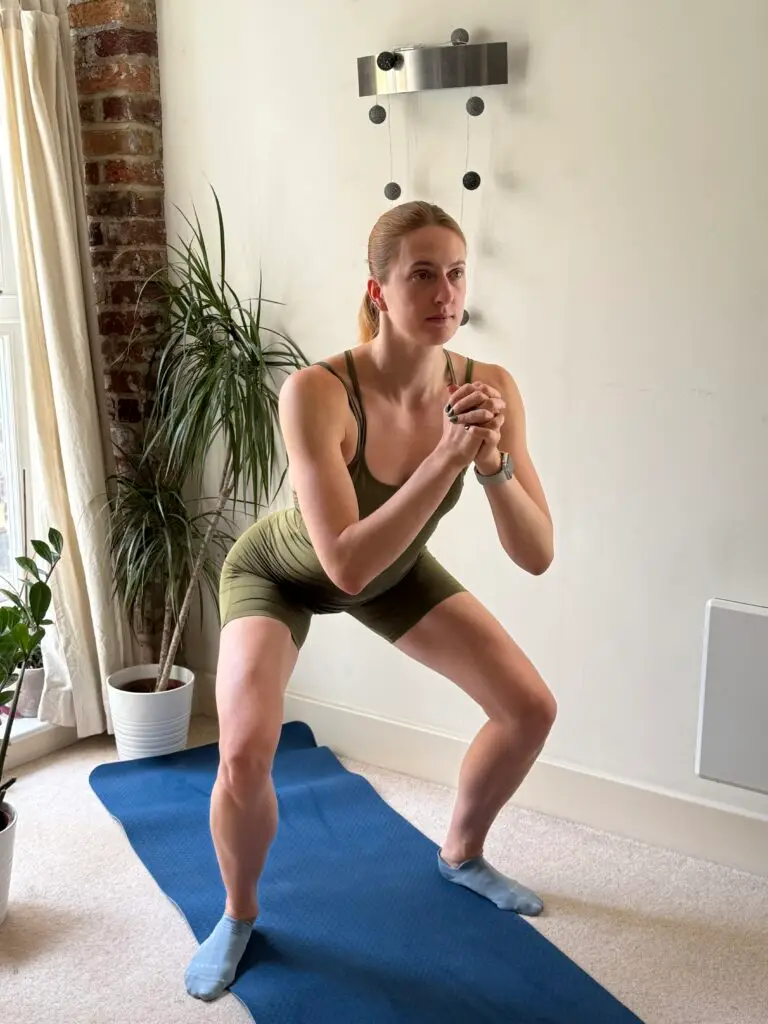
The Science Behind Post-Workout Stretching
When you lift weights, your muscles contract repeatedly under load, creating microscopic tears that lead to strength gains during recovery. However, this process also increases muscle tension and can reduce range of motion if not addressed [2]. My background in Sport and Exercise Science taught me that the immediate post-exercise period is crucial. During this time, your muscles are warm, blood flow is elevated, and your nervous system is primed for lengthening.
The benefits extend beyond just feeling less tight. Research published in the Journal of Sports Medicine and Physical Fitness demonstrates that post-exercise stretching can reduce delayed onset muscle soreness (DOMS) and improve subsequent performance [3]. From my experience training hundreds of clients, I’ve seen how consistent post-workout stretching translates to improved movement quality, reduced injuries, and the ability to train harder and more frequently.
Your body adapts to the positions you spend the most time in. If you’re constantly in shortened positions, whether from sitting at a desk or performing repetitive lifting patterns, your muscles will adapt to these lengths. Post-workout stretching is your opportunity to restore balance and maintain the mobility you need for both training and daily life. The timing is critical too. Static stretching immediately after strength training, when your muscles are warm and pliable, is far more effective than trying to stretch cold muscles hours later. This is when your muscle fibres are most receptive to lengthening, and when you can make the most significant improvements in flexibility.
The World’s 10 Most Significant Stretches
neck bears the brunt of poor posture, both during lifting and in daily life. Whether you’re looking up at the bar during bench press or hunching forward during rows, your neck muscles work overtime to maintain position.
Start by sitting or standing tall with your shoulders relaxed. Gently tilt your head to one side, bringing your ear toward your shoulder without lifting the shoulder to meet it. You should feel a gentle stretch along the opposite side of your neck. Place your hand gently on the side of your head for a deeper stretch, but avoid pulling or forcing the movement.
Hold this position for 30 seconds on each side. The key is gentle, sustained pressure; your neck muscles are delicate and respond better to patience than force. I often see clients yanking their heads around, which can increase tension rather than release it.
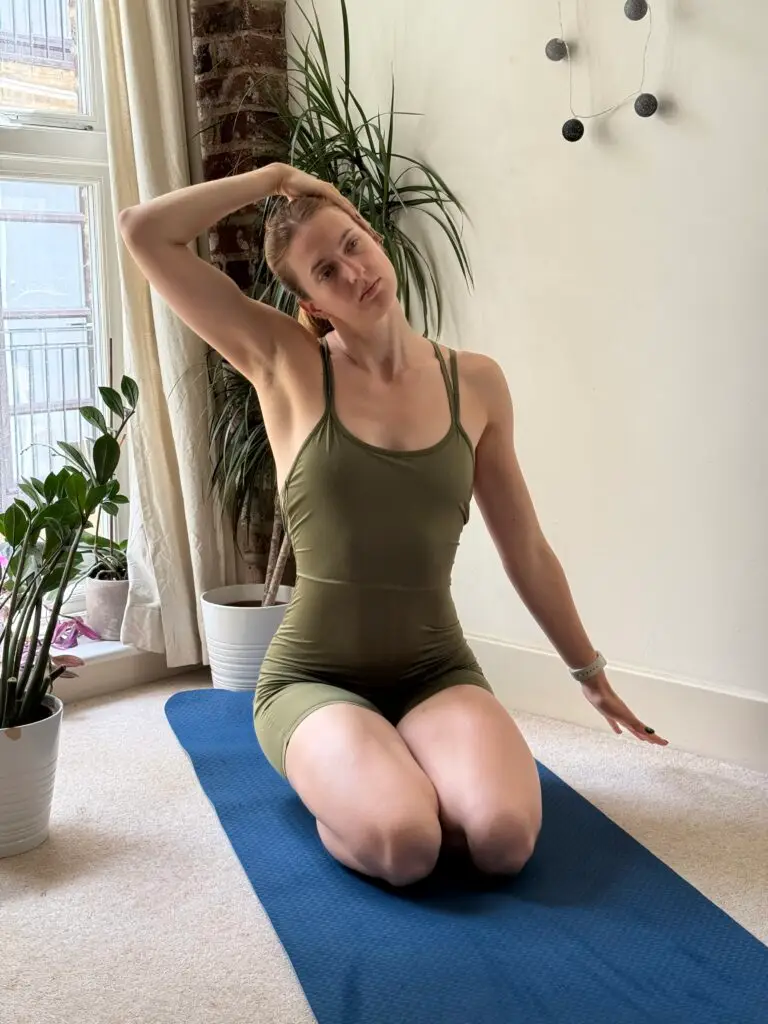
2. Cross-Body Shoulder Stretch
This stretch targets the posterior deltoids and rhomboids, muscles that become tight from all the pulling exercises in your routine. Every row, pull-up, and lat pulldown creates tension in these areas that needs to be addressed.
Bring one arm across your body at chest height. Use your opposite hand to gently pull the arm closer to your chest, applying pressure above the elbow rather than directly on the joint. You should feel the stretch in the back of your shoulder and between your shoulder blades.
Hold for 30 seconds on each arm. A common mistake I see is people pulling on their elbow, which can cause stress to the joint. Instead, apply pressure on the upper arm and let the stretch develop gradually. This stretch is particularly significant if you spend a lot of time on computers, as it helps counteract the forward shoulder posture that often develops from desk-bound activities.

3. Overhead Triceps and Shoulder Stretch
Your triceps work hard during every pressing movement, from bench press to overhead press. This stretch addresses both the triceps and the latissimus dorsi, creating length through the entire posterior chain of your arm and back.
Raise one arm overhead and bend the elbow, letting your hand drop behind your head. Use your opposite hand to pull the elbow toward the centre of your head gently. You should feel the stretch along the back of your arm and down into your lat.
Hold for 30 seconds on each arm. Avoid forcing your elbow into an uncomfortable position or arching your back to compensate. The stretch should be felt in the muscle, not the joint. This stretch is essential after any upper body training session, particularly if you’ve done overhead pressing movements.
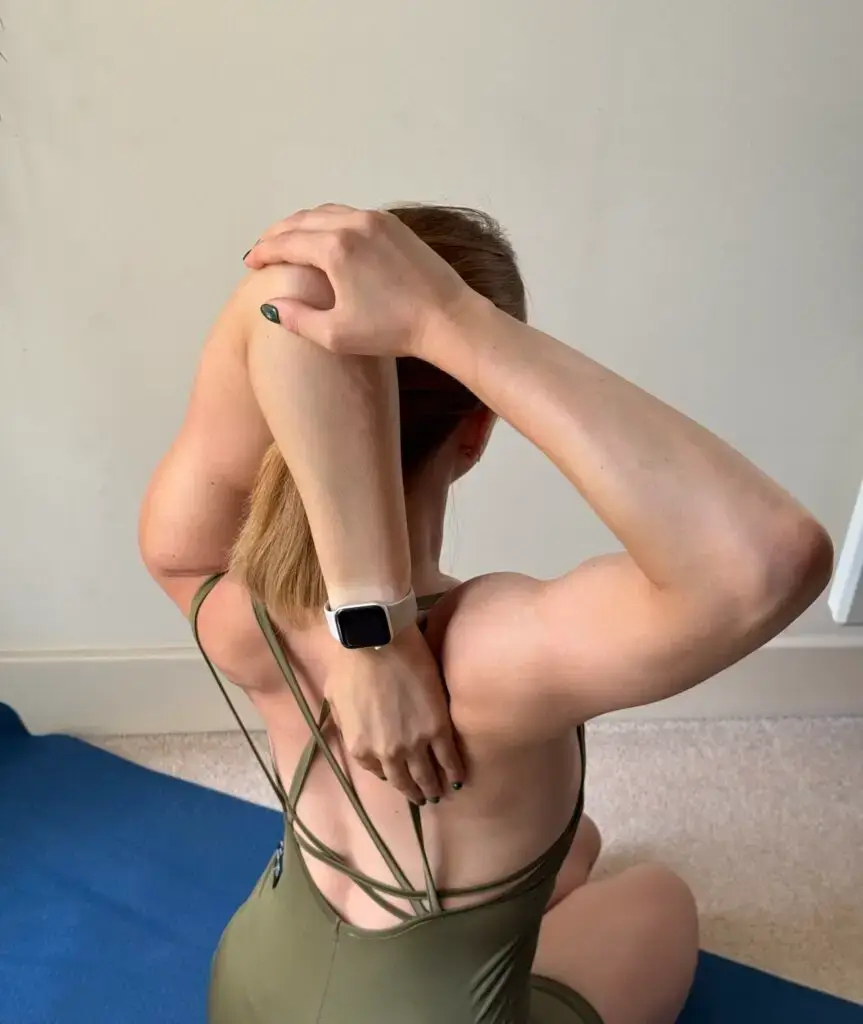
4. Quad Stretch
Your quadriceps can become shortened from prolonged sitting and develop significant tension from exercises like squats, lunges, and other leg movements. This stretch helps restore length to the front of your thigh while also addressing hip flexor tightness.
Standing tall, bend one knee and bring your heel toward your glute. Grab your ankle or foot with the same-side hand, using a wall or chair for balance if needed. Keep your knees close together and avoid pulling your foot to the side.
Hold for 30-45 seconds on each leg. The mistake I see most often is people leaning forward or pulling their foot sideways, which reduces the effectiveness of the stretch. Maintain an upright torso and keep your knees aligned for optimal results.

5. Pigeon Stretch
This is one of the most effective stretches for opening tight hips, addressing both the hip flexors and the glutes simultaneously. It’s particularly valuable for individuals who sit for extended periods or frequently engage in squatting movements.
Start in a lunge position, then lower your front knee to the ground and slide it forward until your shin is roughly parallel to your body. Extend your back leg straight behind you. Lower down onto your forearms or hands, depending on your flexibility.
Hold for 45-60 seconds on each side. This stretch requires patience; don’t force yourself into the position. Use props like cushions under your hip if needed. The pigeon stretches targets multiple muscle groups simultaneously, making it an incredibly efficient exercise for improving hip mobility.
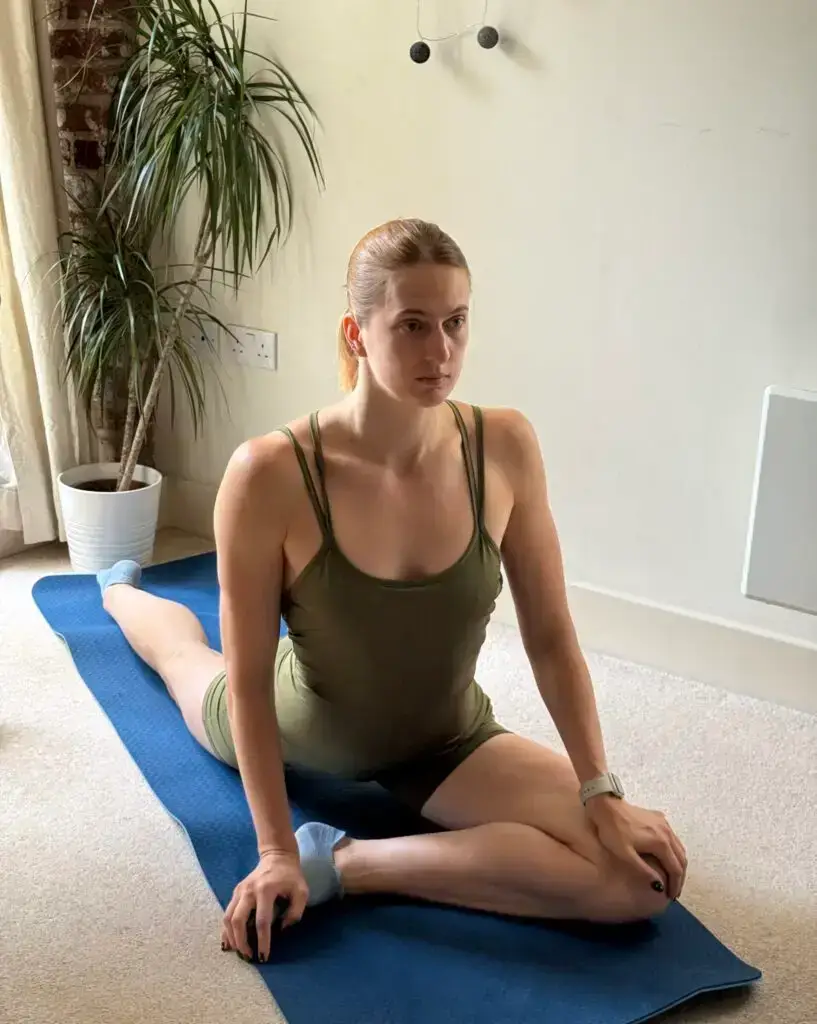
6. Figure Four Stretch
This stretch targets the glutes and piriformis, muscles that become tight from sitting and heavy leg training. It’s particularly effective for addressing the deep hip rotators that are often neglected in traditional stretching routines.
Lie on your back and cross one ankle over the opposite knee, creating a “4” shape with your legs. Thread your hands behind the thigh of the uncrossed leg and gently pull toward your chest. You should feel the stretch in the glute of the crossed leg.
Hold for 30-45 seconds on each side. Keep your head and shoulders relaxed on the ground and avoid forcing the stretch. This position allows you to control the intensity while targeting muscles that are difficult to stretch effectively in other positions.

7. Hamstring Stretch
Your hamstrings work hard during deadlifts, squats, and most leg exercises, often becoming tight and restricting your movement patterns. This stretch helps maintain the length needed for proper hip hinge mechanics.
Sit on the ground with one leg extended straight and the other bent with the foot against your inner thigh. Hinge forward at your hips, reaching toward your extended foot while keeping your back straight. Focus on the movement coming from your hips, not your spine.
Hold for 30-45 seconds on each leg. The key is maintaining a straight back throughout the movement. Rounding your spine reduces the effectiveness of the stretch and can create unwanted stress on your lower back. Think about pushing your chest forward rather than pulling your head down.
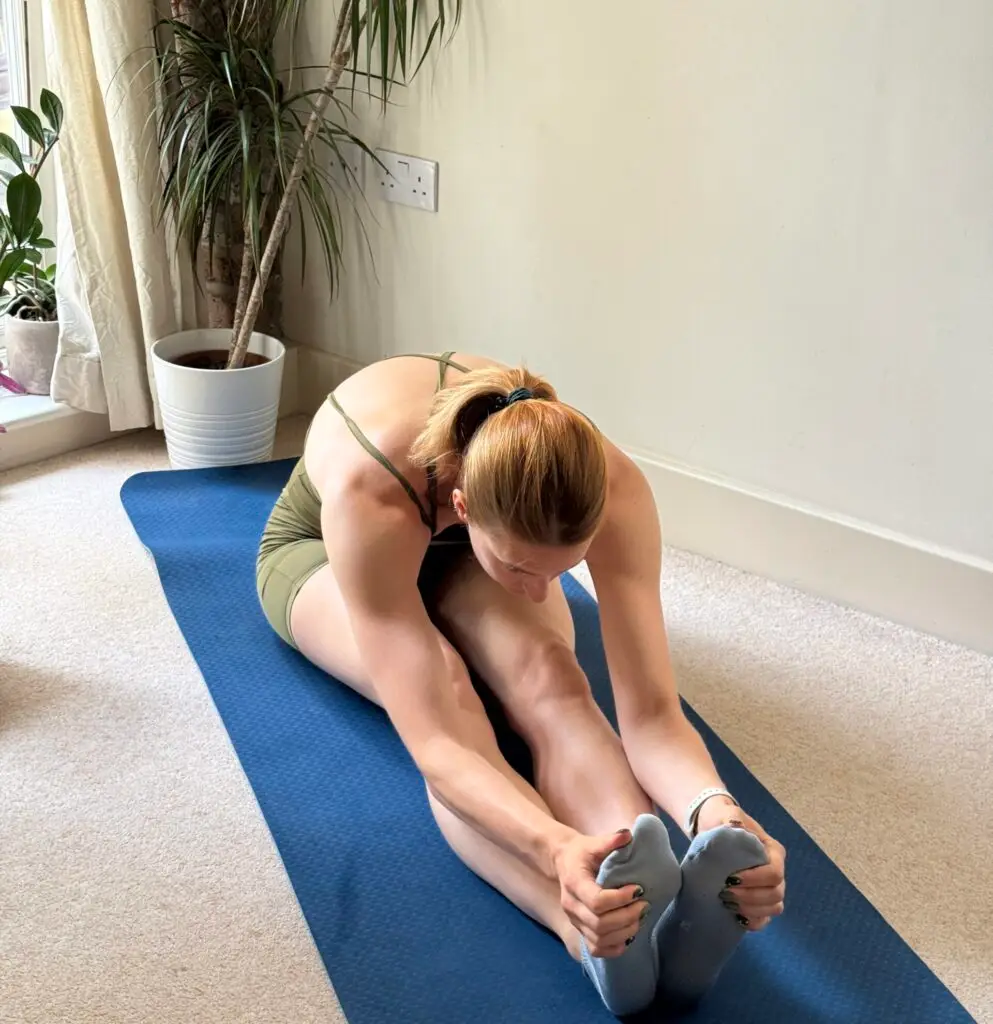
8. Chest Stretch
After all those pressing movements, your chest muscles need attention. This stretch opens up the pectorals and anterior deltoids, counteracting the forward shoulder posture that develops from both training and daily activities.
Stand in a doorway with your forearm against the frame, your elbow at a 90-degree angle. Step forward gently until you feel a stretch across your chest and the front of your shoulder. You can vary the angle by placing your arm higher or lower on the doorframe.
Hold for 30-45 seconds on each side. Don’t force the stretch by stepping too far forward too quickly. The chest muscles respond well to gentle, sustained stretching. This stretch is particularly significant if you frequently perform bench presses or push-ups.
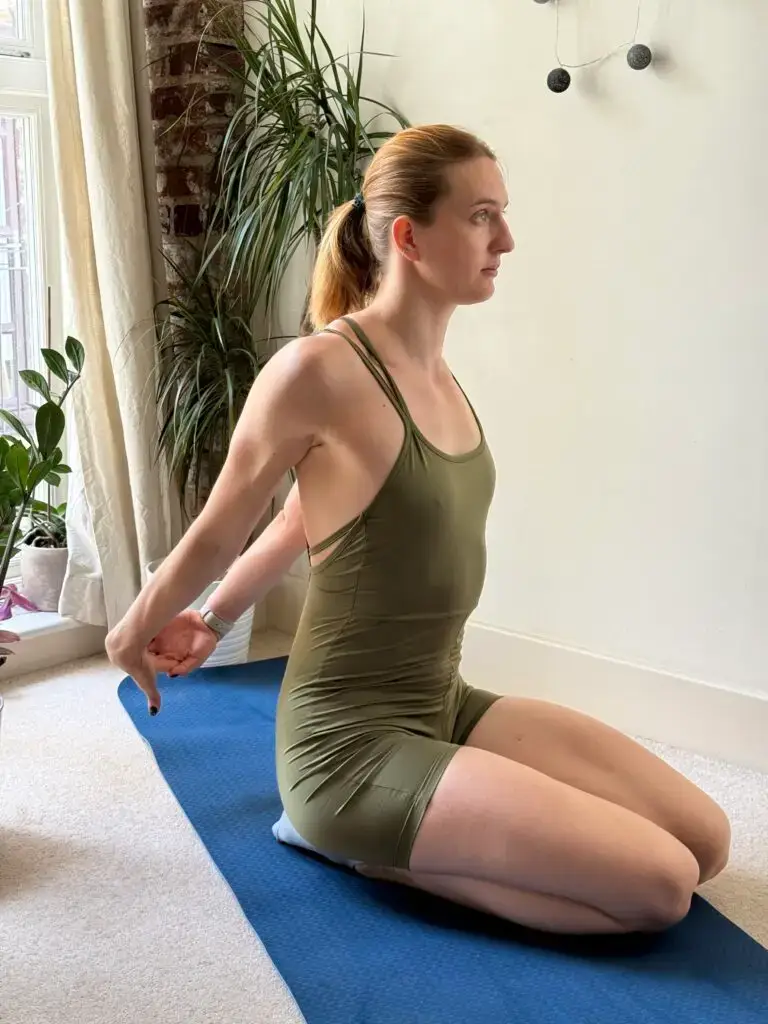
9. Child’s Pose
This yoga-inspired stretch is perfect for decompressing your spine and releasing tension throughout your upper body. It addresses the lats, shoulders, and lower back simultaneously while providing a moment of relaxation after intense training.
Kneel on the ground with your knees wider than hip-width apart. Sit back on your heels and extend your arms forward, lowering your chest toward the ground. Let your forehead rest on the floor if it’s comfortable.
Hold for 45-60 seconds. This stretch is about relaxation as much as it is about lengthening. Breathe deeply and allow your body to settle into the position. It’s an excellent way to transition from the intensity of training to a more relaxed state.

10. Cobra Stretch
This stretch targets the hip flexors, abdominals, and chest areas that become shortened due to sitting and specific exercise patterns. It’s particularly valuable for counteracting forward posture and opening up the front of your body.
Lie face down and place your hands under your shoulders. Press up, lifting your chest while keeping your hips on the ground. Start with your forearms if the full position is too intense, gradually working toward straight arms.
Hold for 30-45 seconds. Avoid lifting too high, too quickly, or creating tension in your neck. The stretch should be felt in your hip flexors and abdominals, not your lower back. This stretch is excellent for anyone who spends time in flexed positions throughout the day.
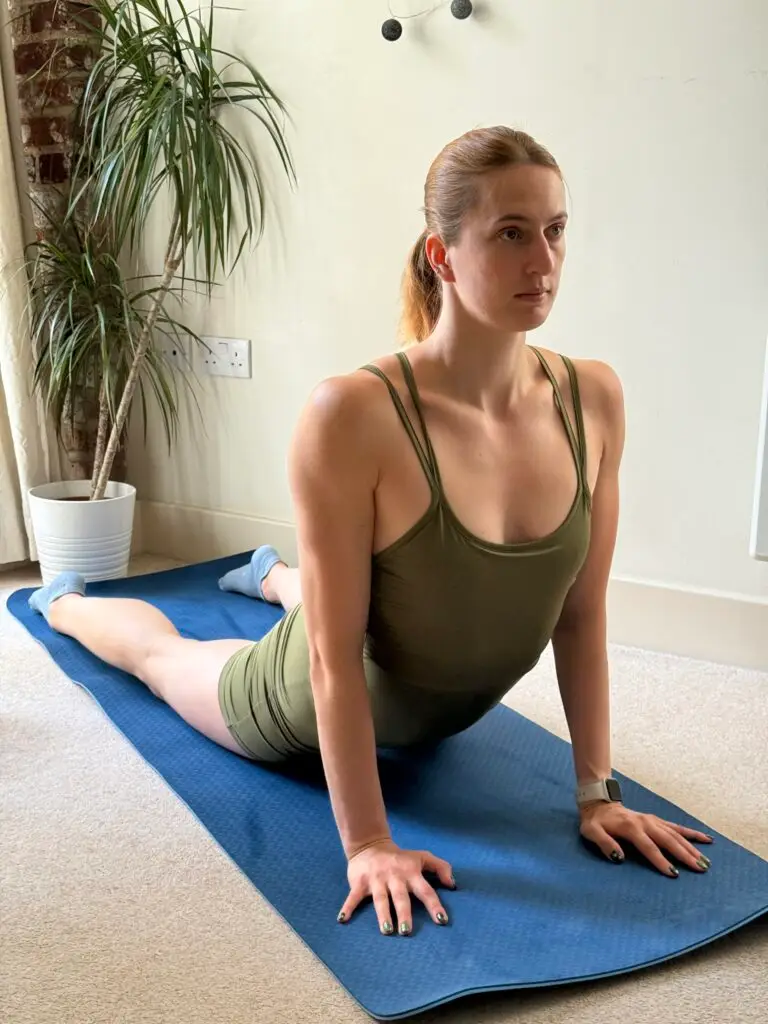
Structuring Your Post-Workout Routine
The key to effective post-workout stretching is consistency and proper timing. I recommend completing your stretching routine within 30 minutes of finishing your strength training, while your muscles are still warm and receptive to lengthening.
Your entire routine should take no more than 10-15 minutes. If you’re short on time, prioritise the stretches that target the muscles you’ve just trained. After an upper body session, focus on stretches for the neck, shoulders, triceps, and chest. Following leg day, emphasise the quad, pigeon, figure four, and hamstring stretches.
The order matters too. Start with larger muscle groups and work your way down to smaller ones. Begin with the pigeon stretch or child’s pose to address multiple areas simultaneously, then move on to more specific stretches, such as the neck or triceps stretch.
Breathe deeply throughout each stretch. Your nervous system needs to relax for muscles to lengthen effectively. Holding your breath or rushing through stretches significantly reduces their effectiveness.
Common Mistakes to Avoid
The biggest mistake I see is people bouncing or forcing stretches. Static stretching should be gentle and sustained; your muscles need time to adapt to the new length. Bouncing can trigger a protective reflex that increases muscle tension.
Another standard error is holding stretches for too short a time. Research shows that holding stretches for at least 30 seconds is necessary for meaningful improvements in flexibility [4]. Anything shorter provides minimal benefit.
Don’t ignore pain signals. Stretching should create a sensation of tension or mild discomfort, never sharp pain. If something hurts, back off immediately. Your body is telling you something important.
Finally, avoid the all-or-nothing mentality. Even five minutes of stretching is better than none. If you can’t complete the whole routine, choose three or four stretches that target your tightest areas.
Your Action Plan
Start implementing these stretches immediately after your next strength training session. Choose five stretches that target the muscles you’ve just worked and hold each for 30-45 seconds. As this becomes habit, gradually add the remaining stretches until you’re completing the whole routine.
Track your consistency for the first month. I’ve found that clients who monitor their stretching habits are significantly more likely to stick with the routine in the long term. Notice how you feel on days when you stretch versus days when you skip it; the difference will motivate you to maintain the habit.
Remember, flexibility improvements take time. Don’t expect dramatic changes overnight, but trust that consistent effort will yield significant results over weeks and months.
Conclusion
These 10 stretches represent the most effective ways to address the tightness and tension that strength training creates. They’re not optional extras, they’re essential components of a complete training programme that will keep you moving well and feeling great.
During my decade of training clients, I’ve never met anyone who regretted taking the time to stretch after their workouts. The investment of 10-15 minutes pays dividends in how you feel, how you move, and how well you can train in future sessions.
Start today. Your future self will thank you for developing this crucial habit, which separates those who train for years from those who burn out after just months.
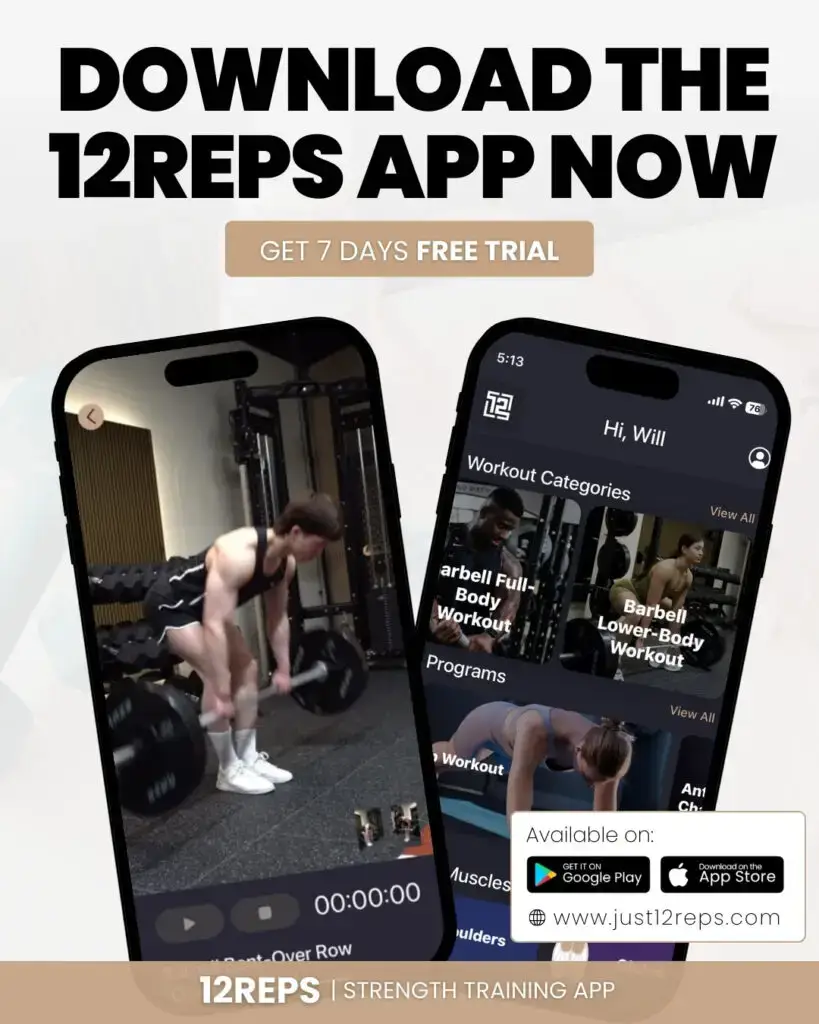
References
[1] Behm, D. G., & Chaouachi, A. (2011). A review of the acute effects of static and dynamic stretching on performance. European Journal of Applied Physiology, 111(11), 2633-2651. https://doi.org/10.1007/s00421-011-1879-2
[2] Weerapong, P., Hume, P. A., & Kolt, G. S. (2005). The mechanisms of massage and effects on performance, muscle recovery and injury prevention. Sports Medicine, 35(3), 235-256. https://doi.org/10.2165/00007256-200535030-00004
[3] Torres, R., Ribeiro, F., Alberto Duarte, J., & Cabri, J. M. (2012). Evidence of the physiotherapeutic interventions used currently after exercise-induced muscle damage: systematic review and meta-analysis. Physical Therapy in Sport, 13(2), 101-114. https://doi.org/10.1016/j.ptsp.2011.07.005
[4] Bandy, W. D., & Irion, J. M. (1994). The effect of time of static stretch on the flexibility of the hamstring muscles. Physical Therapy, 74(9), 845-850. https://doi.org/10.1093/ptj/74.9.845

